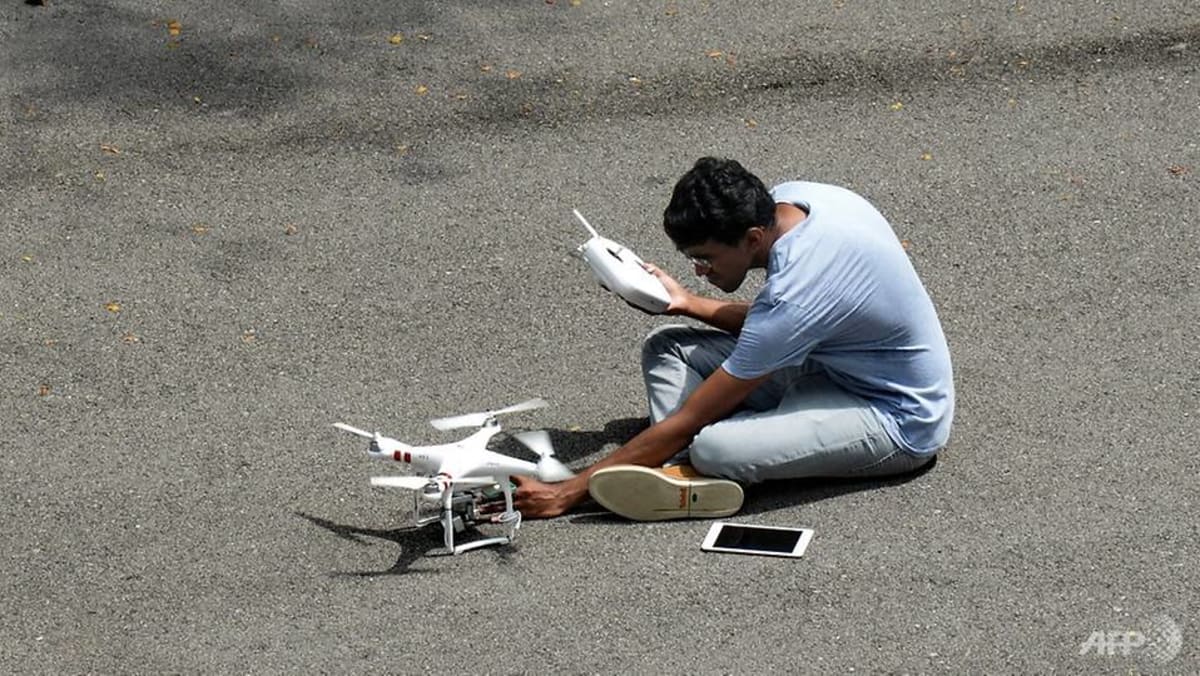THE FUTURE: INNOVATION WITH RESPONSIBILITY
Clearly, what’s needed are regulations that specifically target irresponsible users without unfairly penalising those who follow safety guidelines meticulously.
Singapore already maintains strict zonal restrictions around sensitive areas, including airports and military facilities. Based on mapping data on OneMap, I estimate that these restricted areas cover about two-thirds of Singapore’s over-land airspace.
Some advocate expanding these restrictions to areas near schools and densely populated neighbourhoods. However, overly restrictive measures may unintentionally inhibit beneficial drone innovations without significantly improving safety.
The CAAS-approved designated drone area in Dover Road, for example, is a stone’s throw away from Singapore Polytechnic, UWC South East Asia Dover and a preparatory school. Should flight restrictions be expanded to areas home to educational institutions, the drone community may just lose one of two dedicated flying areas with amenities catered to pilots.
Instead, Singapore is wisely pursuing a more nuanced approach.
From Dec 1, 2025, the CAAS will introduce “digital licence plates” for UA in the form of Broadcast Remote Identification (B-RID) as part of a broader air traffic management system. Like the Remote ID, B-RID transmits similar data about the pilot’s identification details and location, among others.
However, unlike the Remote ID, the full details released by CAAS on Jun 9, 2025, seem to position B-RID as a more effective measure for enhancing accountability without unduly restricting drone use.
Drones sold in Singapore will come pre-installed with B-RID, allowing authorities to swiftly detect and penalise operators who flout regulations by flying dangerously or in unauthorised zones. This measure not only makes clear to pilots that their drone activity is being monitored, it also refrains from burdening them financially. Moreover, eligible drone pilots who register their drones early can install B-RID at no additional cost.
Regardless of how likely it is that drone users in the US will indeed face hassle from other members of the public tracking down their locations, it’s even less likely in Singapore, where the habit of ordinary citizens taking the law into their own hands isn’t particularly widespread or entrenched.
With B-RID, drone users who broadcast intentionally misleading remote identification data will also face heavy penalties and possible jail time.
As a whole, B-RID practically and prudently facilitates safer skies – essential for managing future complex operations such as drone deliveries and unmanned air taxis.
Of course, bad actors may circumvent these rules, and some may continue to fly their drones dangerously in restricted areas or altitude despite ample warnings. Addressing these individuals requires separate targeted enforcement strategies, distinct from broad-based regulations designed to encourage responsible flying.
Ultimately, cultivating a culture of responsible drone operation through community education and proactive engagement is likely more effective than reactionary, restrictive policies.
Responsible innovation strikes the optimal balance – allowing drone technology to thrive safely and sustainably, benefiting all of society.
Ng Jun Sen is a senior editor at CNA Digital.
